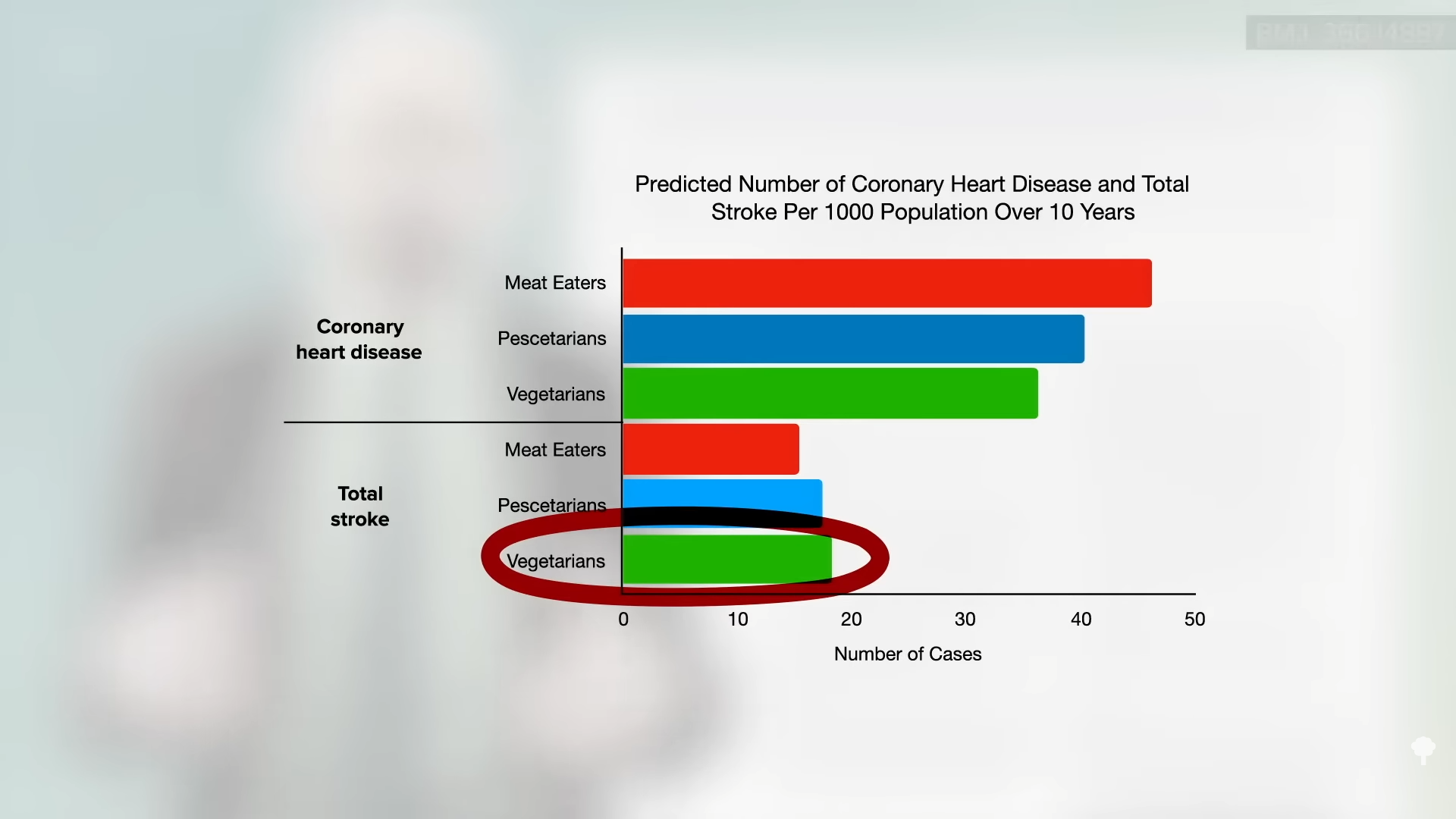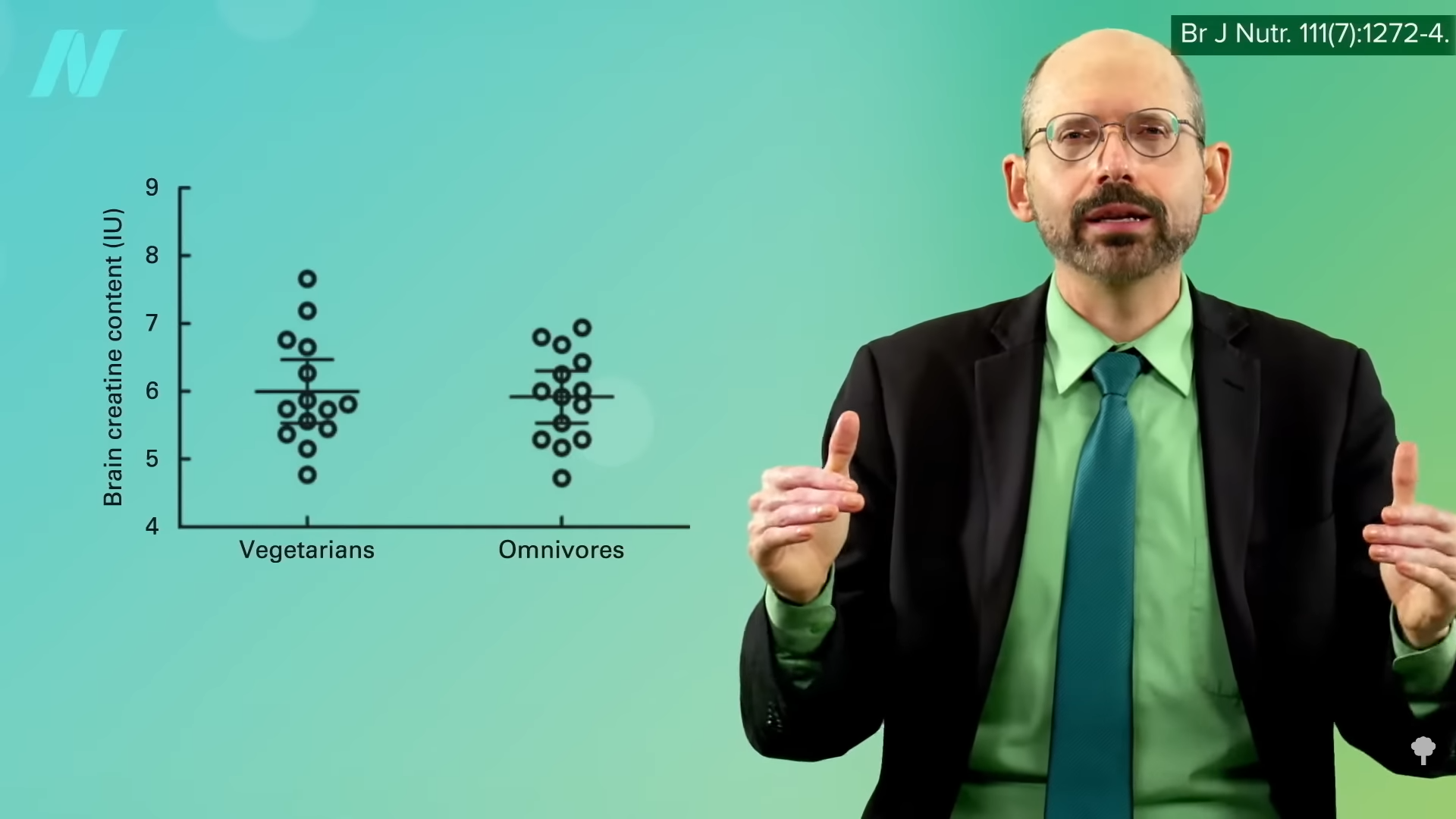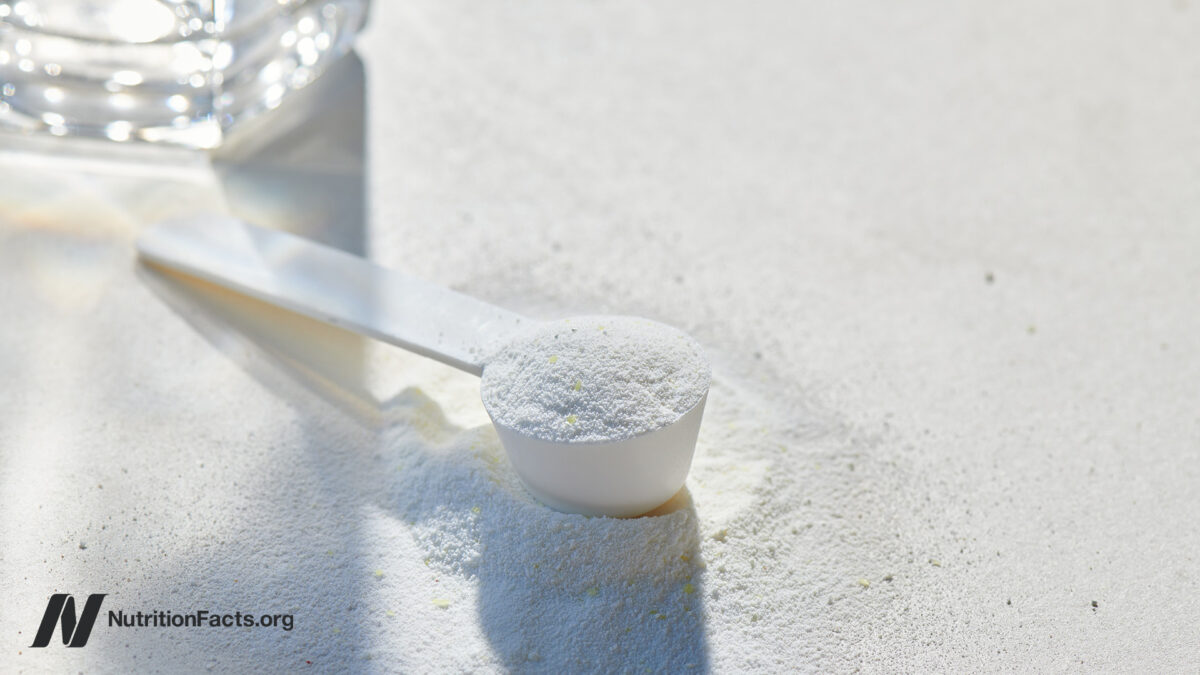What are the consequences of having to make your creatine rather than relying on dietary sources?
“Almost universally, research findings show a poor vitamin B12 status among vegetarians” because they aren’t taking vitamin B12 supplements like they should, which results in an elevation in homocysteine levels. This may explain why vegetarians were recently found to have higher rates of stroke, as you can see in the graph below and at 0:30 in my video Should Vegetarians Take Creatine to Normalize Homocysteine?.

Of course, plant-based eating is just one of many ways to become deficient in vitamin B12. Even nitrous oxide (laughing gas) can do it in as little as two days, thanks to the recreational use of whipped cream canister gas. (I just learned about “whippits”!)
When researchers gave vegetarians and vegans as little as 50 daily micrograms of cyanocobalamin, which is the recommended and most stable form of vitamin B12 supplement, their homocysteine levels, which had started up in the elevated zone, normalized right down into the safe zone under 10 mmol/L within only one to two months. Just 2,000 micrograms of cyanocobalamin once a week gave the same beautiful result, as you can see in the graph below and at 1:15 in my video.

Not always, though. In another study, even 500 daily micrograms, taken as either a sublingual chewable or swallowable regular B12 supplement, didn’t normalize homocysteine within a month, as shown below and at 1:24. Now, presumably, if the participants had kept it up, their levels would have continued to fall as they did in the 50-daily-microgram study.

If you’re plant-based and have been taking your B12, but your homocysteine level is still too high (above 10 mmol/L), is there anything else you can do? Well, inadequate folate intake can also increase homocysteine, but folate comes from the same root as foliage. It’s found in beans and leaves, concentrated in greens. If you’re eating beans and greens, taking your B12, and your homocysteine level is still too high, I’d suggest taking 1 gram of creatine a day as an experiment, then getting your homocysteine levels retested in a month to see if it helped.
Creatine is a compound formed naturally in the human body that is primarily involved with energy production in our muscles and brain. It’s also formed naturally in the bodies of many other animals. So, when we eat their muscles, we can also take in some of the creatine in their bodies through our diet. We only need about 2 grams of creatine a day, so those who eat meat may get about 1 gram from their diet and their body makes the rest from scratch. There are rare birth defects where you’re born without the ability to make it; in that case, you have to get it from your diet. Otherwise, our bodies can make as much as we need to maintain normal concentrations in our muscles.
As you can see in the graph below and at 2:54 in my video, when you cut out meat, the amount of creatine floating around in your bloodstream goes down.

However, the amount in your brain remains the same, as shown in the graph below and at 2:57. This shows that dietary creatine doesn’t influence the levels of brain creatine, because our brain makes all the creatine we need. The level in vegetarian muscles is lower, but that doesn’t seem to affect exercise performance, as both vegetarians and meat eaters respond to creatine supplementation with similar increases in muscle power output. If vegetarian muscle creatine were insufficient, then presumably an even bigger boost would be seen. So, all that seems to happen when we eat meat is that our body doesn’t have to make as much. What does all of this have to do with homocysteine?

As you can see below and at 3:36 in my video, in the process of making creatine, our body produces homocysteine as a waste product. Now, normally this isn’t a problem because our body has two ways to detoxify it: by using vitamin B6 or a combination of vitamin B12 and folate. Vitamin B6 is found in both plant and animal foods, and it’s rare to be deficient. But, vitamin B12 is mainly found in animal foods, so its level can be too low in those eating plant-based who don’t also supplement or eat B12-fortified foods. And, as I mentioned, folate is concentrated in plant foods, so it can be low in those who don’t regularly eat greens, beans, or folic-acid-fortified grains. Without that escape valve, homocysteine levels can get too high. However, if you’re eating a healthy plant-based diet and taking your B12 supplement, your homocysteine levels should be fine.

What if they aren’t? We might predict that if we started taking creatine supplements, our level of homocysteine might go down since we won’t have to make so much of it from scratch, producing homocysteine as a by-product, but you don’t know until you put it to the test. I’ll cover that next.
This is the eleventh in a 12-video series exploring stroke risk. If you missed the last two, see Vegetarians and Stroke Risk Factors: Vitamin B12 and Homocysteine? and How to Test for Functional Vitamin B12 Deficiency.
This whole creatine angle was new to me. I had long worried about homocysteine levels being too high among those getting inadequate B12 intake, but I didn’t realize there was another potential mechanism for bringing it down. Let’s see if it pans out in my final video of the series: The Efficacy and Safety of Creatine for High Homocysteine.
